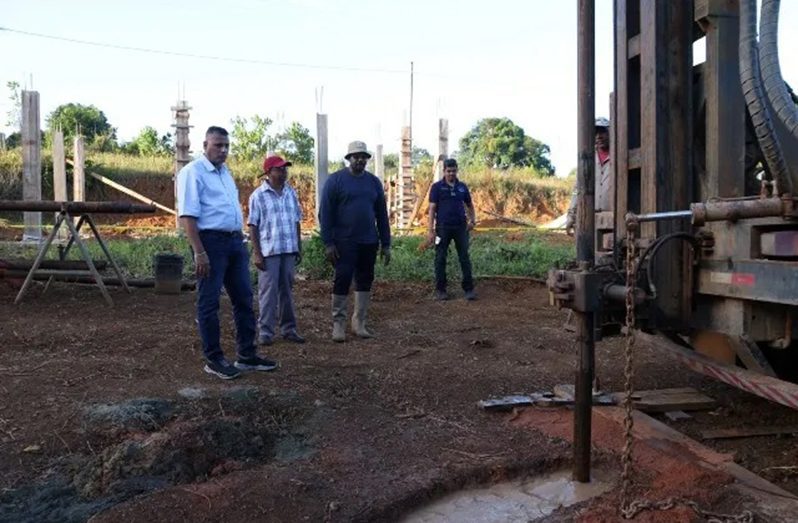–with plans to drill 40 new wells, extend 30 water supply systems this year
IN the remote hinterland of Guyana, the quest for potable water has been a long and arduous journey for many residents.
The daily routine of trekking miles to reach a water source had become a way of life. But hope is on the horizon as the Guyana Water Inc (GWI) has announced the construction of 40 new wells and the extension of 30 water-supply systems across the hinterland.
According to the GWI, for years the residents had to endure the hardship of carrying water from faraway sources, often with long lines and hours of waiting.
The journey back home would be a difficult one, with the water weighing them down and sapping their energy. This task was particularly strenuous for the elderly and the young.
But with the announcement of the new wells and extension of the water-supply systems, the residents could finally breathe a sigh of relief. The prospect of clean, potable water just a few steps away from their homes was a dream come true. The new water sources would mean better health outcomes for the residents, particularly for children.
The programme is funded by the Government of Guyana to the tune of $1.4 billion. According to GWI, once completed, these facilities will serve some 12,000 residents, with more than 7,000 receiving water for the first time in the comfort of their homes, free of cost.
Among the areas to benefit from the drilling of new wells are Manawarin, Waramuri, Haimakabra, Kamwatta, Koko, Parakeeis, Cabora, Karaburi, Wallaba, and Santa Rosa.
Additionally, new wells will be drilled in White Water, Yarakita, Kamwatta, Black Water Savannah, and Wauna in the Mabaruma sub-district.
“The government subsidises the supply of water to the hinterland regions. The President, Dr Irfaan Ali’s administration has mandated GWI to provide 100 per cent access to water in the hinterland and coastland by 2025,” GWI said.
According to Hinterland Services Executive Director, Ramchand Jailall, as of last year GWI has achieved 75 per cent coverage in the hinterland regions.
However, for 2023, the target is 89 per cent in keeping with Goal Six of the United Nations Sustainable Development Goals, ensuring the availability and sustainable management of water and sanitation for all.
Jailall stated that the target of 100 per cent coverage by 2025 will see more wells being drilled in the hinterland at an estimated cost of $4 billion.
According to the United Nations (UN), better access to water is helping to create new possibilities for people in some of the world’s most remote communities.
“Our commitment in the past two years has been to ensure that residents in the hinterland have access to potable water. To this end, we are working judiciously to achieve the target set by the government,” Jailall said
He added that access to potable water means that people can have healthier families and improved lifestyles. It also means that residents can construct flush toilets, and bathroom showers, and enjoy water to their kitchen taps similar to residents on the coastland.
While 100 per cent access to water may not be a 24-hour/seven days per week supply, residents will be afforded sufficient distribution for usage and storage.
With the widening of access to water, GWI has taken several steps to make every drop count. On the coastland and hinterland regions, the company has been actively promoting water conservation through the use of various media platforms to get its message out.
Aside from improving access to water, significant attention is being paid to sanitation, water- resource management, operation and maintenance in the hinterland. The latter is vital to sustaining access to water.
The GWI continues to strengthen its partnership with the Ministries of Amerindian Affairs, Local Government, Health, Education, the Town Councils and the regional administrations in its endeavour to ensure a sustainable supply of water to hinterland communities. (The Guyana Water Incorporated)



.jpg)








